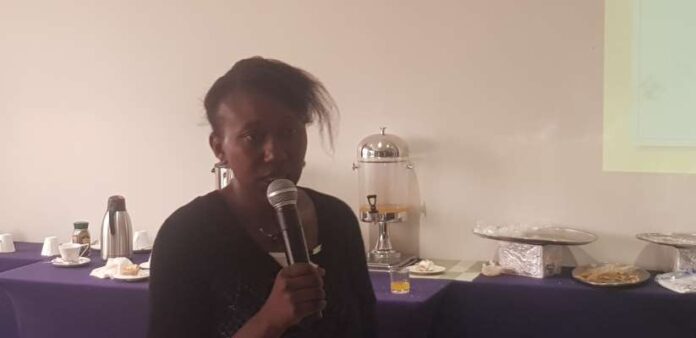Agriculture interest groups have raised eyebrows over the Government’s assurance of the country’s food security until 2024 without qualifying what crops are in strategic reserves besides maize.
Last week agriculture minister Reuben Mtolo assured delegates at the 116th Zambia National Farmers Union Congress that the country’s strategic reserves had stocked about 1.2 million tons of maize, assuring the country’s food security for the next two years.
“We have secured more than 1 million metric tons of the maize and in addition, we have managed to mobilise other crops for consumption which we are securing in our storage sheds and that is an assurance that we’ll have sufficient stocks of up to 2024,” he said during the 116th farmers congress in Lusaka.
The unpredictable weather conditions spurred by climate change and other calamities prompted the country to undertake precautions and avert shortchanged policies that could affect the food security.
But various interest groups have questioned the credibility of the statement on the country’s food assurance for the next two years and seek a clarification of what crops, other than maize, were also stocked to ensure varieties would meet the consumption needs of people in the country as well as meet export needs.
Participatory Ecological Land Use Management (PELUM) Association, a membership organization operating in East and Southern Africa with an office in Zambia doubts Zambia’s food sufficiency estimates of 1.2 million metric tons’.
Wilfred Miga, a soil and crop management scientist with PELUM-Zambia, wonders if peas, soya beans, sorghum, Cassava and other crops were included with the changing of food consumption patterns from maize as the country’s staple food.
“What is the breakdown? Does the quantity in reserves include soya beans, cowpeas, cassava or its only maize? wonders Wilfred Miga, the PELUM program manager in Zambia. “If we are justifying by presence of maize in those sheds, then we are far from being food secure,”
National Association of Smallholder Farmers executive director Frank Kayula argues that the estimated food stocks in the Food Reserve Agency shed after the close of the crop marketing season on 31 August cannot qualify Zambia’s assurance of being food secure.
He stated that most smallholder farmers are still stuck with crops they harvested but were not sold to FRA because of price misunderstandings.
“I think, it’s not correct to assume a paltry 1 million + can feed the whole country for two years and also export part of it, remember there are also Post Harvest Losses that occur in storage sheds,” he said. “I think the minister should be clear on the statement.
PEPLUM, seeking to promote participatory ecological land use management practices for improved livelihoods among smallholder farmers and agro-pastoralist in East and Southern Africa contends that the industrial farming being practiced should be changed to agroecology to save the environment amid heightening climatic effects.
Miga contends the industrial farming has affected soil, the environment with the various practices and chemicals applied in fostering growth of the sector hence the call to resort to organic farming a form of agroecology that covers among other practices, organic, biodynamic or permaculture.
Miga-a scientist specializing in soil, crop, among other farming practices supports fears sustained practices of industrial agriculture would reverse the efforts underway to promote climate resilience.
He argues organic farming was ideal, meets strict set of standards-guaranteeing higher animal welfare, fewer pesticides and antibiotics and no GMOs while supporting more jobs on farms, healthy soil and more on-farm and helps conserve food.
Lydia Chibambo, Zambia Climate Change Network (ZCCN) programs Officer supports calls for Zambia to change to agro ecological farming-dubbed a people-centric system of sustainable agriculture and a social justice movement driven.
It is widely practiced by most local farmers and other food producers to maintain power over their local food systems.
Agroecology, she argues in her presentation in Lusaka that the practice is climate friendly, unites generations of indigenous knowledge, farmer-driven and science-based innovation, and an ecosystem’s natural processes, agro ecological food systems can adapt to and even solve the climate crisis.
Agroecology is ideal for climate action being championed globally and knowledge intensive and based on the diversity of knowledge and practices of farmers. This diversity in knowledge and experience is crucial in times of unexpected shocks or changes which require a multitude of responses.
The promotion of Agroecology for Climate Action conforms to Article 7 of the Paris Agreement aiming at strengthening the global climate change responses underway by increasing the ability of all to adapt to adverse impacts of climate change and foster climate resilience.
The practice further defines a global goal on adaptation with a goal to enhance adaptive capacity and resilience, reduce vulnerability, with a view to contributing to sustainable development.
This should ensure an adequate adaptation response in the context of the goal of holding average global warming well below 2 degrees C and pursuing efforts to hold it below 1.5 degrees C.









